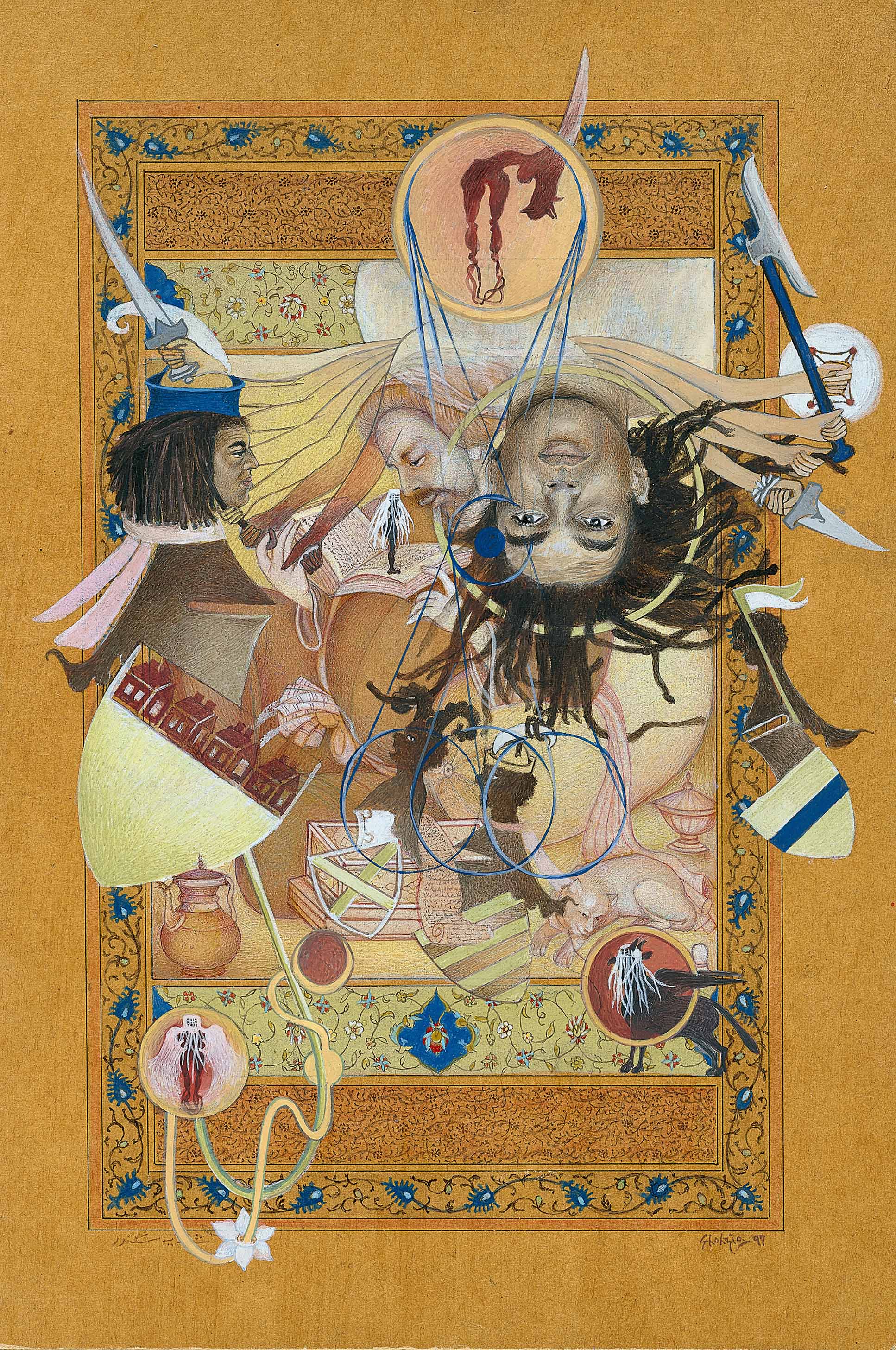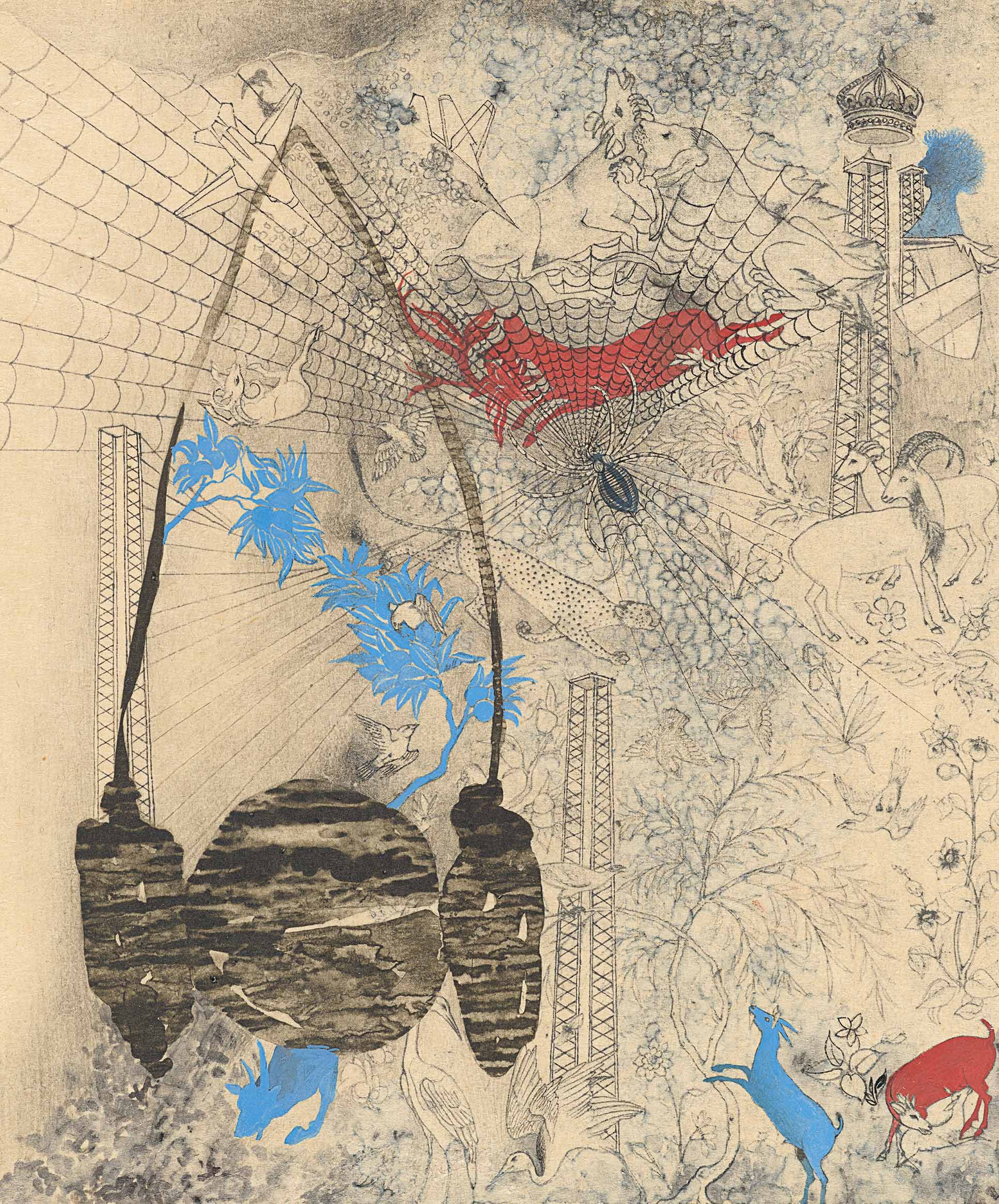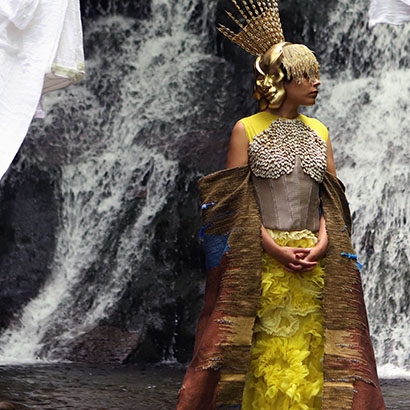The new "Extraordinary Realities" exhibition, with Morgan Stanley’s support, highlights the genre-defying work of this Pakistani American artist.
Over the past four decades, the internationally renowned Pakistani American artist Shahzia Sikander has crafted a unique interdisciplinary visual language from the intimate to the monumental, addressing complex themes, from gender and race to empire and politics.
The Morgan Library & Museum’s new exhibition, Shahzia Sikander: Extraordinary Realities, features work from the first 15 years of her career. The exhibition, sponsored by Morgan Stanley, traces Sikander’s trajectory from manuscript painter to multimedia artist through more than 60 works.
“We’re proud to sponsor Shahzia Sikander’s exhibition Extraordinary Realities at the Morgan Library,” says Susan Reid, Morgan Stanley Global Head of Diversity and Inclusion. “Our firm is committed to celebrating diverse ideas and perspectives and, as a Pakistani American artist, Sikander and her meaningful work will undoubtedly inspire and create dialogue surrounding important topics in our communities and beyond.”
Craft in Miniature
Sikander, born in Pakistan in 1969, studied manuscript painting at the National College of Arts in Lahore from 1987 to 1991. In miniature painting, she saw the potential for a contemporary approach.
“Growing up in the 1980s in Lahore, Pakistan, I saw the legacy of a singular, colonial interloper as it whitewashed the nuances and history of local and national identities. ‘Miniature,’ a colonial term, encompassed premodern Central and South Asian manuscript painting. There were barely any students studying it. It was stigmatized as kitsch and derivative. My interest was sparked in response to that largely dismissive attitude. I wanted to tell richer stories. As I studied the traditions of manuscript paintings, I realized how it could be made to yield new narratives.”2

Breaking down the binary of craft vs. art, Sikander used the techniques and visual language of manuscript painting to explore issues of colonialism, migration and gender in her thesis work, The Scroll. Rather than using the single-panel format of traditional miniature paintings, she created a work that unspools, allowing her to tell a semiautobiographical story of a woman’s interior life in multiple episodes.
Informed by filmic compositions and David Hockney’s photographic collages, as well as the geometric architecture of traditional Persian miniatures, The Scroll broke the rules of Indo-Persian manuscript traditions in several ways. It depicts a personal subject matter in a large-scale cubistic composition. Sikander’s radical work, which received numerous awards and extensive media coverage in South Asia, initiated a neo-miniaturist movement.
Graduate Study in the U.S.
In 1993, Sikander enrolled in the graduate program of the Rhode Island School of Design’s Painting and Printmaking Department. Unlike her painstakingly detailed practice in Lahore, she was now expected to create 50 to 100 drawings a week. Her experimentation with gestural drawings in ink and gouache led to the creation of a looser set of iconographic symbols and expanded her examination of gender and power.

“I am interested in history and politics as well as in the dynamism of form. Form as something alive and in conversation with its time and space. When I create artwork, regardless of which medium, I research visual forms that challenge fixed narratives in order to reorganize histories and geographies of inequality—and in drawing unexpected connections and juxtapositions, I can move stories and people forward,” she says.
Sikander has incorporated her artistic growth and observations into her artwork over the years. An avid reader, she reread many female poets like Audre Lorde, Fahmida Riaz, Angela Carter, bell hooks and Adrienne Rich, which she says allowed her to expand her language and the motifs she created at RISD into her work at the Glassell School of Art in Houston from 1995 to 1997. In Texas she also interacted with Project Row Houses, a residential and arts community in Houston, immersing herself in learning about America’s complex race relations, which she incorporated into her works.

“[I]t is humbling to be an artist, to take in what surrounds you and know that it has the potential to become a catalyst for work and community.”3

In 1997, Sikander moved to New York, where she settled and continued to experiment with interdisciplinary ideas. Her wall drawings and floor-to-ceiling installations of layered drawings, still based in her neo-miniaturist foundations, eventually morphed into multichannel video animations in collaboration with composers and musicians.
Post 9/11, Sikander’s work responded to global shifts in power, war and nationalism. Her most overtly political works, which examine U.S. imperialism and militarism, reflect this shift. Sikander’s career, filled with nuanced and multilayered works, continues to evolve, including the creation of public art works in glass and mosaic. She is a recipient of the MacArthur Fellowship.

The exhibition will be on view at the Morgan Library & Museum from June 18 through Sep 26, 2021.



